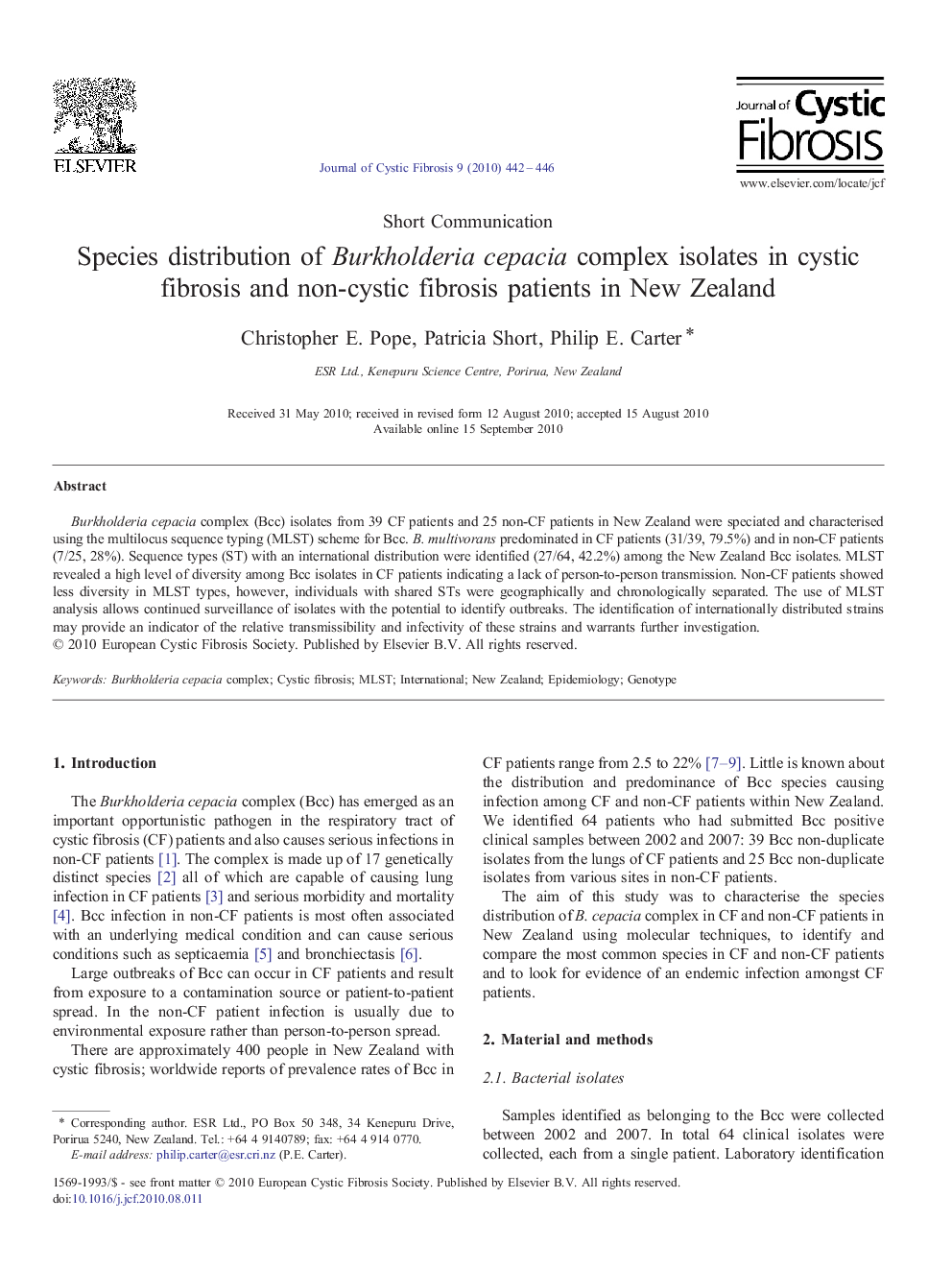| Article ID | Journal | Published Year | Pages | File Type |
|---|---|---|---|---|
| 4208863 | Journal of Cystic Fibrosis | 2010 | 5 Pages |
Burkholderia cepacia complex (Bcc) isolates from 39 CF patients and 25 non-CF patients in New Zealand were speciated and characterised using the multilocus sequence typing (MLST) scheme for Bcc. B. multivorans predominated in CF patients (31/39, 79.5%) and in non-CF patients (7/25, 28%). Sequence types (ST) with an international distribution were identified (27/64, 42.2%) among the New Zealand Bcc isolates. MLST revealed a high level of diversity among Bcc isolates in CF patients indicating a lack of person-to-person transmission. Non-CF patients showed less diversity in MLST types, however, individuals with shared STs were geographically and chronologically separated. The use of MLST analysis allows continued surveillance of isolates with the potential to identify outbreaks. The identification of internationally distributed strains may provide an indicator of the relative transmissibility and infectivity of these strains and warrants further investigation.
